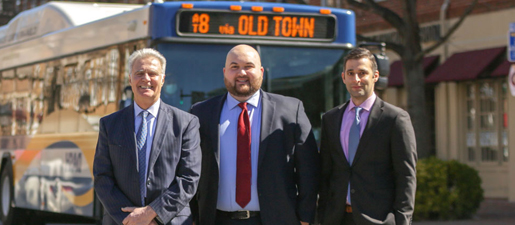The United States is home to the largest passenger vehicle market in the world with an estimated 248 million registered passenger vehicles according to a 2005 Department of Transportation study. With the immense amount of traffic resulting from all of these vehicles comes an increased likelihood that you are going to experience an aggressive driver at some point on the road. Many of us have been out on the roads and encountered the classic aggressive driver; maybe he/she was tailgating, flashing their lights, or recklessly zigzagging around cars. Whatever the case, it is important to be aware of risks posed by aggressive driving.
Aggressive driving is behavior that endangers or is likely to endanger people or property. In Virginia (Code § 46.2-868.1), aggressive driving falls under a broad range of traffic offenses such as speeding, evasion of traffic control devices, failure to stop or yield right-of-way before entering certain highways, following another vehicle too closely, not driving on the correct side of the road, not driving according to lane markings, stopping (usually in the middle of the road) on highways, and passing a vehicle on the right. In Virginia, the lowest level of aggressive driving is classified as a Class 2 Misdemeanor punishable with up to 6 months in jail and a $1000 fine. If it is found that the aggressive driver acted with the intent to injure another person the charge is increased to a Class 1 Misdemeanor punishable with up to a year in jail and a $2500 fine.
Speeding is one of the most common forms of aggressive driving. According to the National Safety Council, the economic cost to American society due to speeding-related crashes is estimated to be $40.4 billion per year. Additionally, crash data shows a continuous increase in the number of deaths attributed to speeding. Driving fast it makes it harder for drivers to react to dangerous situations, reduces the ability to steer safely around curves or objects in the roadway, and increases the force of impact in crashes. In 2008, The National Safety Council found that speeding was a contributing factor in 31% of all fatal crashes.
Encountering an aggressive driver can be a frightening experience; luckily the DMV of Virginia provides some very helpful tips to help drivers out who encounter an aggressive driver.
- Make sure everyone in the vehicle is wearing a seat belt.
- Do not react to actions from the aggressive driver that would cause you to loose concentration or get angry yourself. Remember to focus on the road and maintaining the safety of your vehicle.
- Do not make eye contact or make any gestures to further aggravate the situation. Although it may be challenging, stay calm and disengage from the situation.
- Try to get away from the driver but remember your safety comes first.
- Report the situation to local law enforcement by dialing 911 or, if on the interstate, dial #77 to reach the state patrol.
Aggressive driving does not just develop on the spot; it happens through a buildup of emotions throughout the day. As drivers, it is important to keep our emotions in check and not let stress build up only to boil over when we get behind the wheel. If you find you are displaying some aggressive driving tendencies you can try several tactics to reduce your stress level behind the wheel: plan ahead and allow enough time for delays, look up your route in advance and check for construction projects or congestion that may add time to your trip, try listening to calming music in the car, or repeat a calming mantra. If all else fails, remember to try your best to stay calm because honking, yelling at other drivers, and getting angry will not going to make traffic go any faster. For more information about how to avoid being an aggressive driver and tips on what to do if you encounter an aggressive driver I recommend checking out this short handout published by the National Safety Commission or this pamphlet from AAA.

